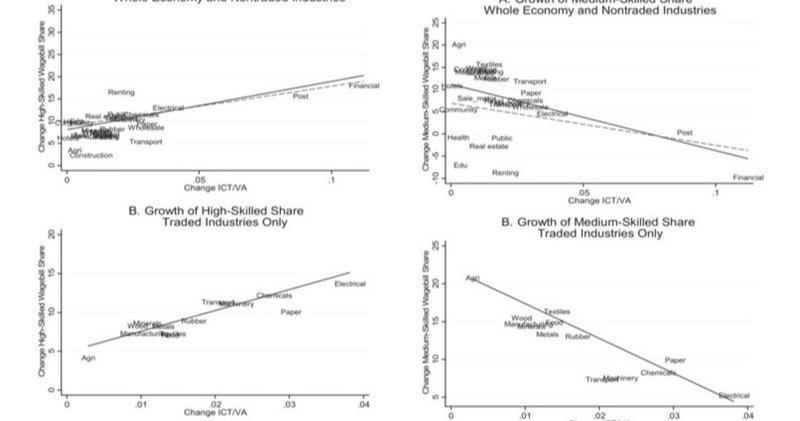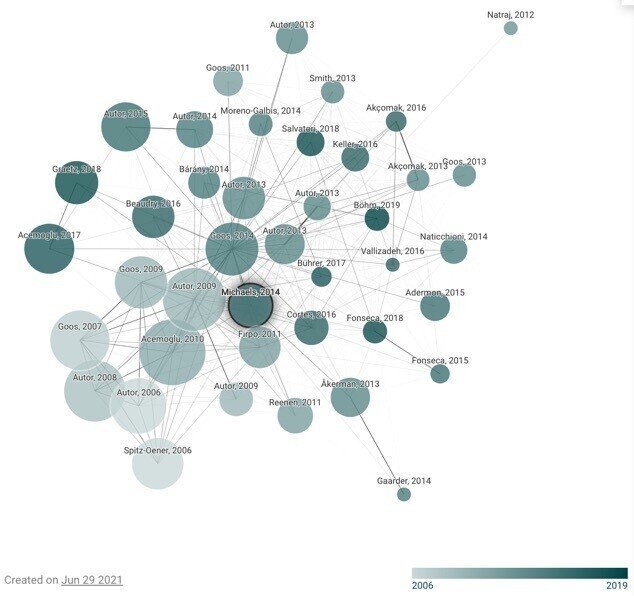
【EL Vol.7】ITによる労働市場の二極化:Has ICT polarized skill demand? Evidence from eleven countries over twenty-five years
IT革命による生産性の向上は付加価値額や賃金の上昇をもたらしたが、その効果は全ての人々に行き渡っているわけではない。Michaelsら (2014) は先進11か国25年間のデータを用い、産業用ロボット導入はハイスキル労働者の所得を押し上げた一方で中スキル以下の停滞や労働時間減少につながったことを示し、労働市場において二極化が起きていることを指摘した。
Abstract
We test the hypothesis that information and communication technologies (ICT) polarize labor markets by increasing demand for the highly educated at the expense of the middle educated, with little effect on low-educated workers. Using data on the United States, Japan, and nine European countries from 1980 to 2004, we find that industries with faster ICT growth shifted demand from middle-educated workers to highly educated workers, consistent with ICT-based polarization. Trade openness is also associated with polarization, but this is not robust to controlling for R&D. Technologies account for up to a quarter of the growth in demand for highly educated workers.
要約
情報通信技術(ICT)が労働市場を二極化させるという仮説を検証する。それは、高学歴者への需要が中学歴者を犠牲にして増加し、低学歴者にはほとんど影響しないというものである。1980年から2004年までの米国、日本、欧州9カ国のデータを用いて分析したところ、情報通信技術の成長が早い産業では、需要が中等教育を受けた労働者から高学歴の労働者へとシフトしており、情報通信技術に基づく二極化と一致することがわかった。貿易開放度も分極化と関連しているが、これは研究開発をコントロールしても頑健ではない。高学歴労働者の需要増加の4分の1を技術が占めている。

MLA
Michaels, Guy, Ashwini Natraj, and John Van Reenen. "Has ICT polarized skill demand? Evidence from eleven countries over twenty-five years." Review of Economics and Statistics 96.1 (2014): 60-77.
Connected Papers

この記事が気に入ったらサポートをしてみませんか?
